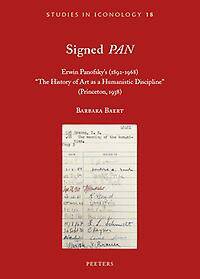
- Afhalen na 1 uur in een winkel met voorraad
- Gratis thuislevering in België vanaf € 30
- Ruim aanbod met 7 miljoen producten
- Afhalen na 1 uur in een winkel met voorraad
- Gratis thuislevering in België vanaf € 30
- Ruim aanbod met 7 miljoen producten
Zoeken
Signed 'Pan'
Erwin Panofsky's (1892-1968) 'The History of Art as a Humanistic Discipline' (Princeton, 1938)
B Baert
€ 36,00
+ 72 punten
Omschrijving
In 1935 Erwin Panofsky (1892-1968) was appointed the first 'permanent member' of the School of Humanistic Studies (now the School of Historical Studies) at the Institute for Advanced Study in Princeton. The famous institute was founded by the American educator Abraham Flexner (1866-1959). This essay contributes to the content and context of Panofsky's important lecture "The History of Art as a Humanistic Discipline" from1938. The publication of that lecture functioned as a manifesto written by an intellectual emigre in a new American context. It is thanks to Panofsky that the locus classicus of iconography, as Irving Lavin (1927-2019) described the Institute for Advanced Study, received the compelling arguments for an "art history that deserves to be counted among the humanities." A close reading of the text and an analysis of its impact can still teach us something about the origins and development of the Art Historical field and Iconological Studies today.
Specificaties
Betrokkenen
- Auteur(s):
- Uitgeverij:
Inhoud
- Aantal bladzijden:
- 91
- Taal:
- Engels
- Reeks:
- Reeksnummer:
- nr. 18
Eigenschappen
- Productcode (EAN):
- 9789042943056
- Verschijningsdatum:
- 18/09/2020
- Uitvoering:
- Paperback
- Formaat:
- Trade paperback (VS)
- Afmetingen:
- 170 mm x 240 mm
- Gewicht:
- 1528 g

Alleen bij Standaard Boekhandel
+ 72 punten op je klantenkaart van Standaard Boekhandel
Beoordelingen
We publiceren alleen reviews die voldoen aan de voorwaarden voor reviews. Bekijk onze voorwaarden voor reviews.











